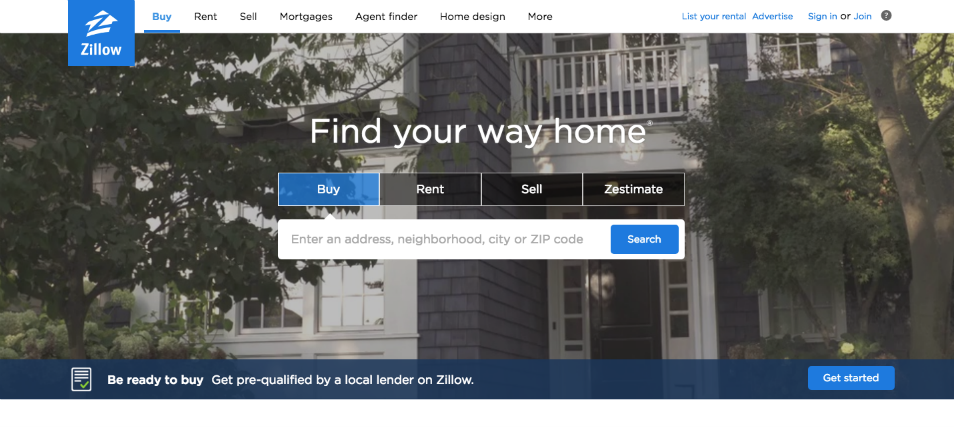Content Creation
Finding Your Point of View in Marketing: Tips on Shaping Brand Perspective
By Jonathan Crowl on June 28, 2018
When creating a story, choosing a point of view is one of the earliest and most influential decisions you will make. The point of view shapes the angle from which you approach storytelling, influencing your story's voice, tone, emotional resonance, and so on.
In many cases in content marketing, the choice of point of view is usually made subconsciously or shaped by executive decisions that have already laid out strict standards for branded content. For example, if the business wants to focus exclusively on real-world stories of their products improving their customers' lives, then the storytelling content will likely be framed in first or third person.
On the other hand, if your business wants to develop a campaign that walks prospective customers through the hypothetical process of making an important decision, such as considering options and potential obstacles in looking for a new software solution, your content is mostly likely to take the form of second person. In this case, making heavy use of the "you" pronoun works to keep the consumer at the center of the content experience.
These decisions may seem nit-picky at first, especially if point of view is being implicitly shaped by other aspects of the creative process. Some marketers may be content to let point of view issues sort themselves out on their own. But inconsistencies in your marketing point of view may be creating hidden hiccups in your efforts to connect with your audience and tell your brand's story in the most effective way possible. If you're serious about creating a brand narrative that has a high impact on your audience, it's crucial that you understand how point of view can help or hamper your storytelling efforts. Here's a look at how these perspectives can be deployed for different effects.
First Person: Take It from Me
According to Writer's Digest, the strongest appeal of first-person storytelling is that it creates an unparalleled sense of intimacy. In film, books, and yes, even marketing and advertising, stories told in the first-person have the ability to feel more authentic and personal than stories told in other perspectives. Brands typically employ this device in several ways: They might create a singular brand voice or identity to narrate stories and speak from the brand's perspective, or they could use the collective pronoun "we" to fashion the brand's point of view as representative of a larger community of its employees or customers.
This collective first-person perspective is especially common among brands that aim to use their marketing strategy to foster a sense of community. It's on full display in Facebook's recent damage control campaign following its Cambridge Analytica fallout.
"We came here for the friends," says the company at the start of its video apology. "And we got to know the friends of our friends."
In this case, the "we" isn't just Facebook as a company: It's the entire Facebook community, which includes you and me. The video does a decent job of emphasizing Facebook's role as a community-builder, and it puts consumers directly in the position of having a relationship with the brand. When the anonymous voice speaking for Facebook starts narrating, it's working hard to pull the right emotional strings and remind you of all the good times you've had together.
If you've ever broken up with someone, or had someone break up with you, the sentiment will be quite familiar. This strategy is a proven method for reducing the emotional and psychic distance between a brand and its audience, which heightens the impact of the narrative for its audience.
Second Person: Making Your Story Matter
Putting the "you" in branded content is a well-worn strategy by this point, but it helps to understand exactly how this pronoun and perspective function in service of effective storytelling. Marketers love the second-person POV because it's more active and engaging to the audience, speaking directly to them and their needs. Research published in the Journal of Interactive Marketing notes that second-person pronouns can enhance consumer involvement in online brand messaging, particularly on social media posts and in company blogs.
The research notes that the impact of the second person was more significant on consumers coming from more individualistic, rather than collectivist, cultures. Hofstede Insights ranks the United States among the least collectivist countries in the world, which means the impact of second-person narration on American consumers is likely stronger than almost anywhere in the world. This is an important consideration for multinational brands creating custom campaigns for different regions and countries: While second-person POV is a reliable hit among American consumers, it may not fare as well in more collectivist cultures, including many in Asia and the Middle East.
Second person doesn't have to be limited to blog posts and social media, though. For companies like Zillow, the second-person POV is foundational to their larger brand narrative. The company's sole purpose, or so it suggests, is to help you find a home. Everything from its content to its tools to its homepage messaging is geared toward this objective, and at each opportunity the brand speaks directly to the consumer.
Third Person: Creating Distance to Establish Authority
Third-person points of view typically rely on a degree of separation, which can feature either an omniscient voice or the voice and perspective of an individual or set of individuals. It's often used by brands and stories that center on characters or that use celebrity endorsers or influencers to tell a brand story from a position of relative authority.
Just as in fiction or film, the third-person approach to point of view is rarely infallible. But it's a tool for establishing objectivity and trust in the consumer, which is a big reason why endorsement deals have been so effective over the years: Even when consumers understand the business relationship that leads Beyoncé to endorse Pepsi, for example, they still put a certain degree of faith in her decision-making. The implication is that if Beyoncé approves, it must be okay, because Beyoncé wouldn't lead us astray.
Conversely, third person is a way to step back and let your brand's offerings speak for themselves. Contrast Facebook's first-person approach to the typical brand strategies employed by Google, which doesn't rely on mascots, characters, or celebrities to tell their story. Instead, their marketing strategy often opts to shine a spotlight on its products and services. One of its most famous turns in brand storytelling was a bold Super Bowl ad that told a "Parisian Love" story exclusively through Google Search queries and results.
Beyond being one of the best TV ads of the past ten years-a hill I'm willing to die on, based on the innovative style and depth of storytelling-the ad is very effective at creating a brand narrative simply by demonstrating the utility of its product. There's a strong emotional appeal, sure, but the brilliance of the ad is that it told a familiar story-a love story-in an unfamiliar way, but also in a way that made perfect sense for the company's marketing goals.
Innovative forms are most effective when the chosen form serves the story being told. Google wanted to show how its product plays such a central, significant role in its users' lives. What better way to do that than through the product itself? The result is an incredible brand story that still seems fresh and smart years down the road.
Mastering the use of point of view in marketing will take time, practice, and close attention to the mechanics of how other brand stories succeed in connecting with their audience. But once you have a fine understanding of the way perspective can enrich your brand stories, you'll be able to identify how POV issues might be holding back your branded content, and how better management of this point of view can open doors to new, innovative opportunities.
For more stories like this, subscribe to the Content Standard newsletter.
Featured image attribution: Anton Darius



